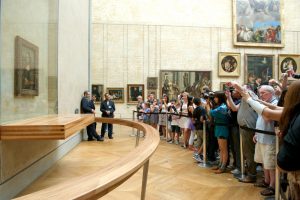If you've ever been to Venice on a summer weekend, or to Skagway when a couple of cruise ships were in port, you know what over-tourism looks like: a horde of visitors that overpower the limited available tourist facilities. And over-tourism is emerging as a serious problem in dozens of visitor meccas where local officials are trying to figure out how either to accommodate or to limit the number of visitors.
The Over-Tourism Problem
As a visitor, and therefore a part of the problem, you can also be part of the solution—and you can also improve your chances of minimizing the discomforts.
Over-tourism plagues a wide range of visitor areas:
- Important historic cities including Barcelona, Rome, Florence, and Venice; even Waikiki, London, and Paris during peak visitor months.
- Small cities and towns and isolated attractions with limited infrastructure that can be inundated, ranging from Carmel to Oxford to Haleiwa to Stonehenge.
- Small-city cruise ports, where a shipload of 5,000 visitors can completely clog the community, ranging from Skagway to Santorini.
- Natural-resource areas with limited automobile carrying capacity, including Yosemite and Great Smoky Mountains.
Many of these areas have identified over-tourism as a serious problem and are seriously considering ways to cope. The Italian cities are looking at ways to assess fees for entry. Small cruise ports are considering seasonal limitations on number of cruise ship visits. And some U.S. National Parks are looking toward a combination of higher entry fees, advance reservations, and prohibition of private autos, coupled with external parking and shuttle buses.
RELATED: 9 Places to See Before They Disappear
The Solution to Over-Tourism
Avoiding popular visitor areas completely is not a viable solution. After all, they're popular for a reason. Florence, Venice, Santorini, and Carmel are unique—there are no substitutes. Nor can you unilaterally do much to aid the over-tourism.
Instead, the best you can do is to avoid the busiest times. That means steering clear of peak summer vacation times, in most places; the Christmas-New Years weeks at a few.
Instead of driving, use public transportation where it's available.
In attractions with big day-use crowds, stay overnight locally and visit before the day crowds arrive and after they leave.
These are not robust solutions to the problems, which will require action on the part of governments and resource management officials. But there are ways that you can help—at least a little.
More from SmarterTravel:
- 12 Dream Destinations That Don't Want You to Visit
- 10 Most Overrated Tourist Traps
- Machu Picchu Is Overrated, Go to Choquequirao Instead
Consumer advocate Ed Perkins has been writing about travel for more than three decades. The founding editor of the Consumer Reports Travel Letter, he continues to inform travelers and fight consumer abuses every day at SmarterTravel.
Read the original story: How to Cope with Crowded Tourist Destinations by Ed Perkins, who is a regular contributor to SmarterTravel.






